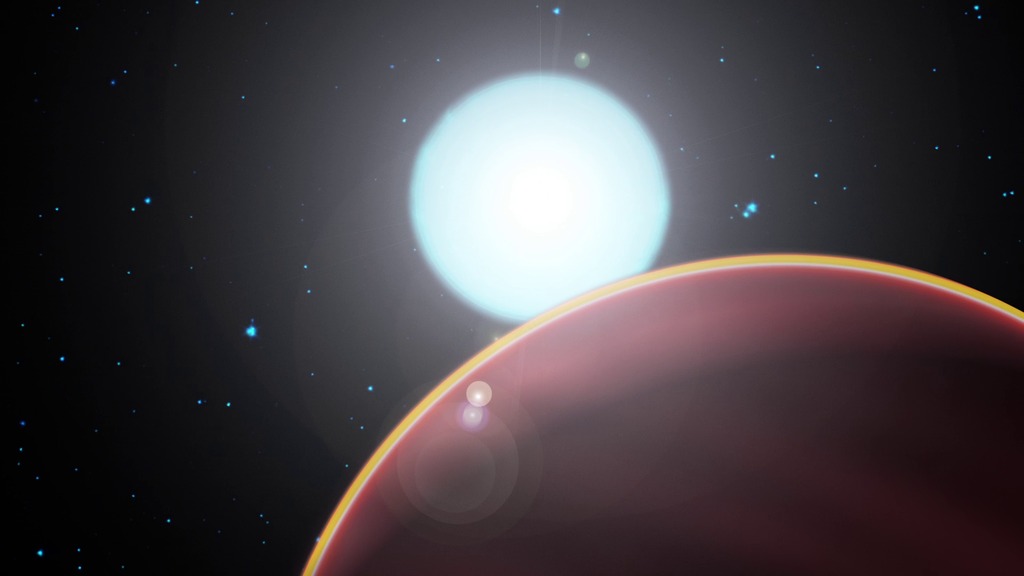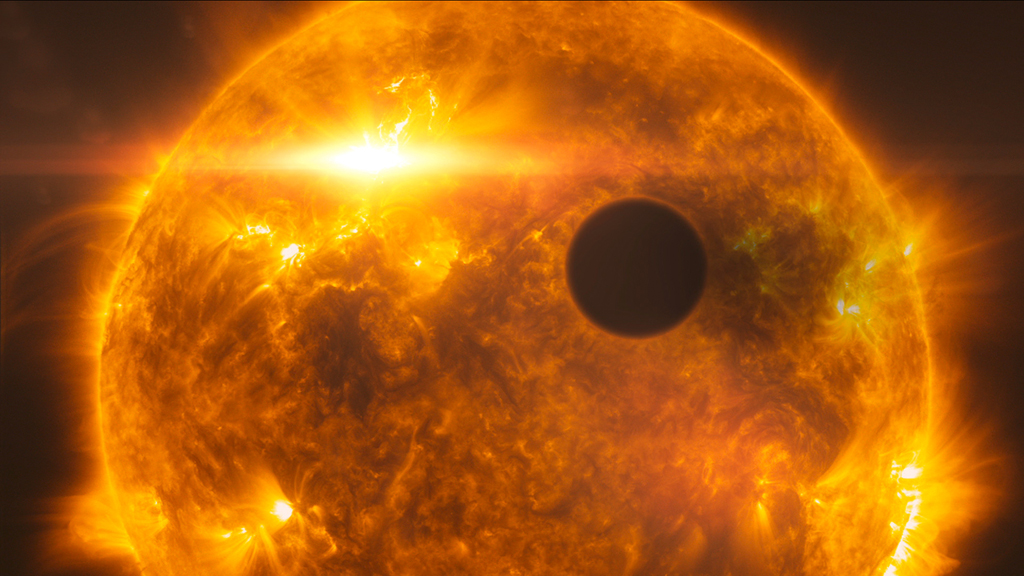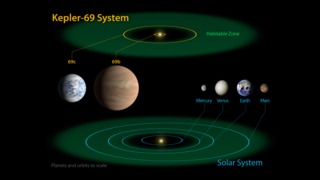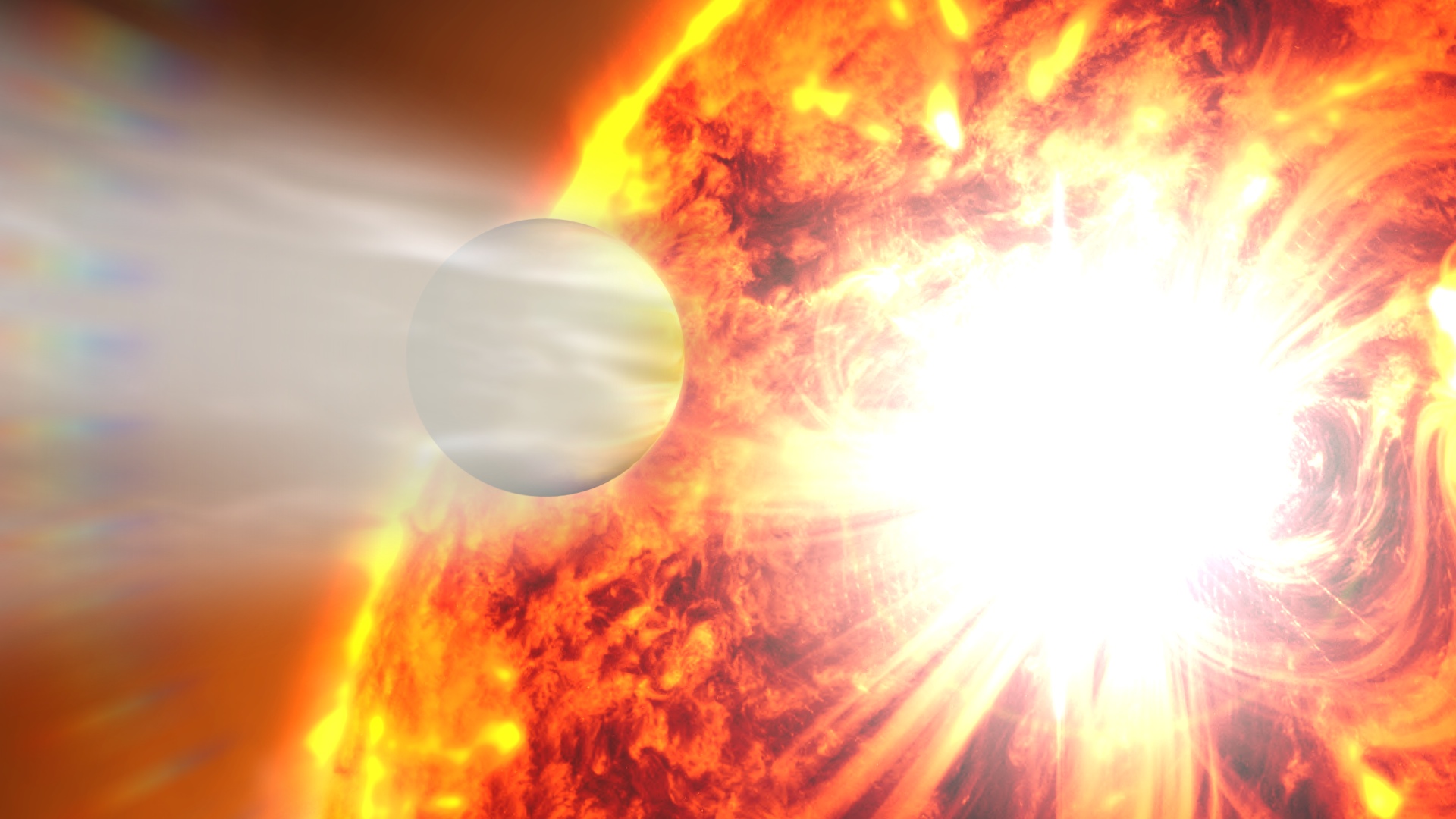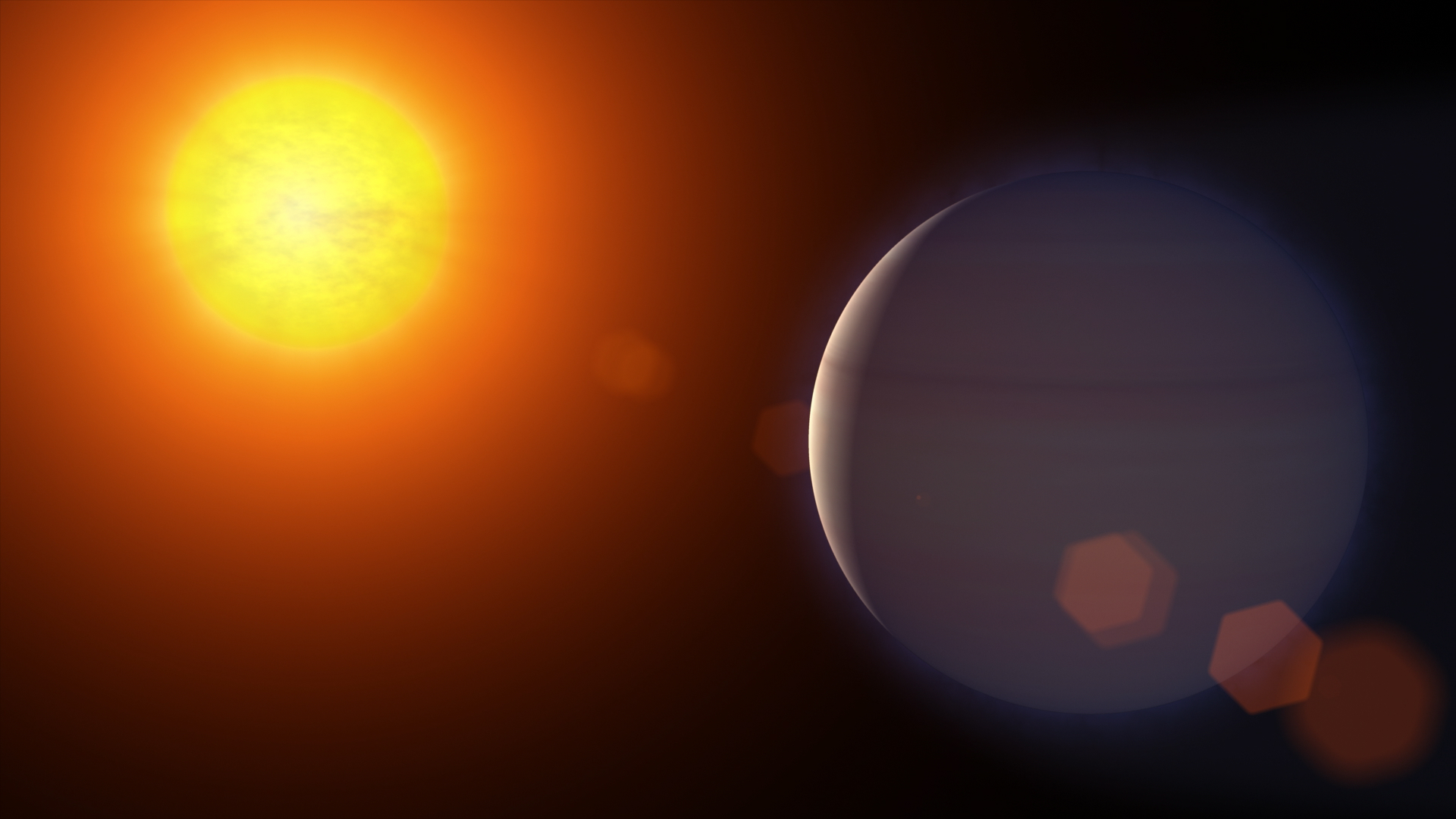Alien Atmospheres
Since the early 1990's, astronomers have known that extrasolar planets, or "exoplanets," orbit stars light-years beyond our own solar system. Although most exoplanets are too distant to be directly imaged, detailed studies have been made of their size, composition, and even atmospheric makeup - but how? By observing periodic variations in the parent star's brightness and color, astronomers can indirectly determine an exoplanet's distance from its star, its size, and its mass. But to truly understand an exoplanet astronomers must study its atmosphere, and they do so by splitting apart the parent star's light during a planetary transit.
Alien Atmospheres Although most of the planets outside of our solar system (called "exoplanets") are too distant to be seen, astronomers have developed indirect methods to determine their size, mass, and even their atmospheric makeup - taking us one step closer to finding a world like our own.
Watch this video on the NASAexplorer YouTube channel
For complete transcript, click here.
Exoplanet Animation - Transit Light Curve
When a planet crosses directly between us and its star, we see the star dim slightly because the planet is blocking out a portion of the light. We can make a plot called a light curve with the brightness of the star versus time. Using this plot, we can see what percentage of the star's light the planet blocks and how long it takes the planet to cross the disk of the star. Larger planets block out more light.
Exoplanet Animation - Absorption
The molecules in a planet's atmosphere absorb certain wavelengths of a star's transmitted light. We can see this absorption as the planet transits the star's disk, and we can thus identify the molecules in the planet's atmosphere.
This version of the animation includes "absorbed" and "transmitted" labels.
Exoplanet Animation - Absorption without labels
The molecules in a planet's atmosphere absorb certain wavelengths of a star's transmitted light. We can see this absorption as the planet transits the star's disk, and we can thus identify the molecules in the planet's atmosphere.
This version of the animation does not include labels.
Exoplanet Animation - Transit Depth vs Wavelength
An individiual planetary transit can appear different when observing the star at different wavelengths. That's because a planet's atmosphere blocks out more light at some wavelengths and less light at other wavelengths. Studying these differences in transit depths can reveal information about the composition, size, and density of the transiting planet's atmosphere.

Exoplanet Image - Crescent Transit
This planet is about to cross in front of its star.
Credit: ESA/Hubble

Exoplanet Image - Limb
An exoplanet's atmosphere can filter out certain wavelengths of its star's light.

Exoplanet Image - Atmospheric Depth
Transit methods can help us determine the depth of an exoplanet's atmosphere as it passes in front of its star.

Exoplanet Image - WASP-19b Transit Depth Curve and Moleclues
Exoplanet WASP-19b is a "hot Jupiter", a gas giant that orbits close to its star. Analyzing its transit across different wavelengths shows varying transit depths. This variation indicates high abundance of hydrocarbons like methane and hydrogen cyanide in the planet's thick atmosphere, and low abundance of water - probably not your next vacation destination!

Exoplanet Image - WASP-19b Transit Depth Curve
Exoplanet WASP-19b is a "hot Jupiter", a gas giant that orbits close to its star. Analyzing its transit across different wavelengths shows varying transit depths. This variation indicates high abundance of hydrocarbons like methane and hydrogen cyanide in the planet's thick atmosphere, and low abundance of water - probably not your next vacation destination!
For More Information
Credits
Please give credit for this item to:
NASA's Goddard Space Flight Center
Additional animations courtesy ESA/Hubble
-
Animators
- Dan Gallagher (USRA)
- Michael Lentz (USRA)
- Chris Smith (HTSI)
- Scott Wiessinger (USRA)
-
Video editor
- Dan Gallagher (USRA)
-
Producer
- Dan Gallagher (USRA)
-
Scientist
- Avi Mandell (NASA/GSFC)
-
Project support
- Aaron E. Lepsch (ADNET Systems, Inc.)
-
Writers
- Elizabeth Zubritsky (ADNET Systems, Inc.)
- Avi Mandell (NASA/GSFC)
- Dan Gallagher (USRA)
Series
This page can be found in the following series:Tapes
The media on this page originally appeared on the following tapes:-
Exoplanet Atmospheres
(ID: 2012110)
Tuesday, December 3, 2013 at 5:00AM
Produced by - Dan Jacob (Global Science and Technology, Inc.)
Release date
This page was originally published on Tuesday, December 3, 2013.
This page was last updated on Thursday, October 10, 2024 at 12:16 AM EDT.

